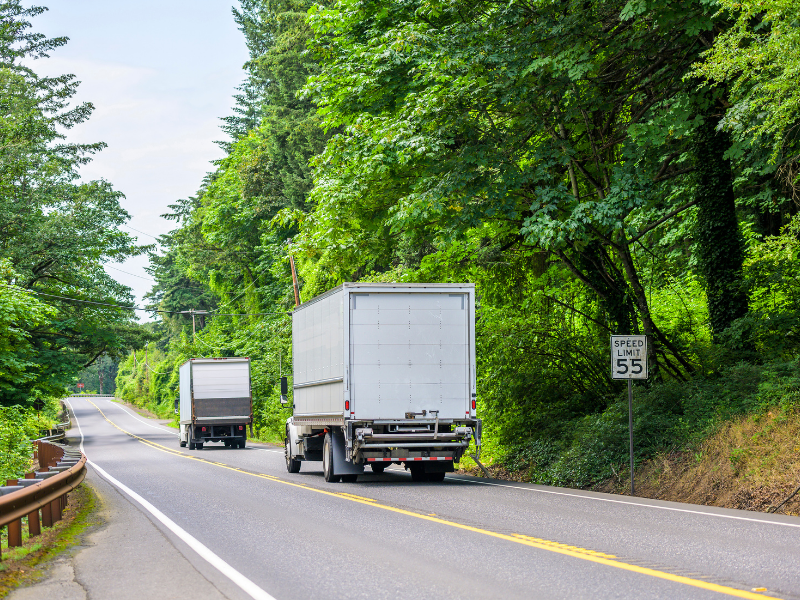
According to Statista, the U.S. will have 300 million online shoppers in 2023 — 91% of the current population. With so much shopping taking place online, fast and efficient delivery is essential to keeping your operation lean and competitive. And with 53% of total shipping costs tied up in the final leg of your product’s journey to the end customer, last mile delivery optimization is one of the most important things to get right.
A huge selection of last mile delivery companies promise to help you get your products into customers’ hands on time, but — and it’s a big BUT — optimizing your last mile involves more than just choosing the right carriers. Why? Read on.
Consumers expect more — and are less forgiving — than ever
In a recent consumer research survey conducted by Oracle, 74% of consumers said they want their order delivered within one to five days. Half said if the estimated delivery time was too long, they’d abandon their order. And many customers won’t return if they have just one bad experience with your brand, so meeting delivery promises can make all the difference in building customer loyalty.
While having a trustworthy carrier network is a key part of meeting these expectations, a smooth delivery experience starts before the carrier has the package in hand. Validating addresses, choosing optimal routes, and being able to spot trouble like traffic and weather all help get your deliveries to doorsteps on time.
Last mile delivery costs keep going up
The last mile for retail deliveries costs an average of $10 per order – and with many (if not most) consumers expecting free shipping, those costs can really put a pinch on retailers. It gets even more expensive if an exception happens – each failed delivery costs around $18, adding up to $309 billion in industry-wide returns in 2019.
A lot of the cost comes from fuel expenses. Last mile delivery requires a lot of stops; in rural areas, these stops are often miles away from each other, while city deliveries mean traveling at lower speeds and fewer miles per gallon. Not using the most optimized routes possible can cut deep into profit margins for all of those orders.
Lack of last mile visibility makes these problems worse
A recent industry survey found that more than 60% of retailers struggle with getting clear visibility into their last mile delivery logistics solutions. Considering the high cost of failed deliveries, that’s a concerning number for the industry.
There’s a reason “visibility” has become a buzzword in the last mile space: without it, mitigating or solving the other challenges on this list are more difficult (if not impossible). Tracking numbers aren’t enough anymore – customers want complete transparency throughout the order fulfillment process. If you can’t provide real-time information on where their order is, you’re already in trouble.
Visibility is also key when it comes to managing or avoiding exceptions. If you don’t have real-time updates on each delivery, you’re stuck being reactive to issues – instead of proactive in preventing them. Whether it’s a misrouted driver, incorrect address, or routing through peak traffic times, lack of visibility into your carrier network leaves you flying blind.
The solution: last mile delivery optimization
How do you regain control of your last mile to bring costs down and push profit margins up? Last mile delivery solutions can help, offering a range of tools to manage your deliveries with ease.
Some of the most powerful benefits of a good last mile delivery app include:
- Detailed, real-time visibility to help avoid exceptions. The software can keep track of peak traffic times and weather forecasts to help you optimize routes and reroute around potential delays. It also helps you keep your customers up-to-date and alert them to any changes in delivery windows.
- Optimal carrier selection. By integrating with and pulling data from your carrier network, a good last mile platform helps you choose the best carrier at the best price for each delivery. Automating this process can save your team 16 minutes per order, so they can focus on other tasks and business objectives.
- Historical data collection to make further improvements. Optimizing your last mile delivery logistics solutions requires a lot of information on how your fulfillment has worked in the past. From deliveries per region and average distance traveled, to on-time delivery percentage and fleet costs, this data helps you make informed decisions about what’s working and what you need to adjust.
Need some help with your last mile delivery optimization efforts? Schedule a last mile delivery solution demo today.

